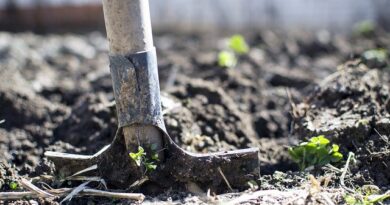Dam Rehabilitation and Improvement Project (DRIP)
Context:
Dam Rehabilitation and Improvement Project (DRIP) is a State sector scheme formulated to bridge the funding gap and provide urgent finance to States for repair and maintenance of Dams
About DRIP:
- The project was launched in 2012 by the Central Water Commission (CWC) with the financial aid of the World Bank
- In 2021, only 4 states were a part of this project: Madhya Pradesh, Orissa, Kerala, and Tamil Nadu
- Moving forward, 3 more states/organizations joined this rehabilitation program: Karnataka, Uttaranchal Jal Vidyut Nigam Limited, and Damodar Valley Corporation
- The project was initially launched with a duration of 6 years but was later expanded further for another 2 years, till June 2020
- The total cost of the project was Rs. 2100 crores (2012) and the amount allocated for Phase II and III is Rs. 10,211 crore
- The project was launched in 2020, with DRIP Phase II and III, with similar objectives, but at a larger scale
- There were 225 dams which were covered for rehabilitation and improvement in terms of safety measures
- 80% of the total project is provided by the World Bank as loan/credit and remaining 20% is borne by the States / Central Government (for CWC).
- The project implementation will be coordinated and supervised by the Central Dam Safety Organisation
Background
- India ranks third globally after China and the United States of America, with 5334 large dams in operation about 411 dams are under construction and several thousand smaller dams.
- These dams are vital for ensuring the water security of the Country and play an important role in the economic and agricultural growth of our country.
- At present due to deferred maintenance and other health issues, these dams have associated risks in case of failure and observed catastrophic consequences, in terms of loss of human life and property, and damage to ecology.
- So, in 2012, Ministry of Water Resources, River Development & Ganga Rejuvenation through Central Water Commission started Dam Rehabilitation and Improvement Project (DRIP) with World Bank assistance.
- Now, DRIP Phase II & Phase III launched with the financial assistance of the World Bank (WB) and Asian Infrastructure Investment Bank (AIIB).
Objectives:
- To improve the safety and performance of selected existing dams and associated appurtenances in a sustainable manner.
- To strengthen the dam safety institutional setup in participating states as well as at the central level.
- To explore the alternative incidental means at few of selected dams to generate the incidental revenue for sustainable operation and maintenance of dams.
DRIP Phase II and III
On October 28, 2020, the Cabinet Committee on Economic Affairs, approved the Dam Rehabilitation and Improvement Project, under the guidance of Prime Minister Narendra Modi.
Given below are the characteristics of DRIP Phase II and III:
- The project is funded by World Bank and Asian Infrastructure Investment Bank (AIIB)
- This program will be implemented over a period of 10 years, divided into two phrases, i.e., April, 2021 to March, 2031
- With the involvement of more states and Agencies, the Government intends to maintain more and more water resources of the country
THE NEED FOR REHABILITATION
- These dams have served the country well for the economic stability even in the worst years of drought, floods, cyclones, etc.
- Out of these, 3750 (79.6%) dams are more than 20 years old.
- Few of them do not meet the present design standards – both structurally and hydrologically.
- Thus an increasing number of dams fall in the category where they need rehabilitation.
JURISDICTION
- Water being a state subject, the state governments are the owners of the dams within their territories.
- As such any dam safety related initiatives by the Central Government would necessarily have to involve the state governments also.
- Keeping this in view, the matter was broached in the State Irrigation Ministers Conference held in 1975; In a follow up of its recommendation,
- A Dam Safety Organization (DSO) was created at the centre in Central Water Commission (CWC) in 1979.
- The objective of this DSO was to perform a advisory role for the State Governments and to lay down guidelines, compile technical literature, organize trainings, etc.
- In general to take steps to create awareness in the states about dam safety and thereafter assist in setting up infrastructure for the same
What was the need for the Dam Rehabilitation and Improvement Project?
The Dam Rehabilitation and Improvement Project (DRIP) is an important initiative taken by the Union cabinet to improve the maintenance and operation of dams in India.
The project holds significance as India is the third country, after China and the United States of America, in terms of the dam’s operation. There are over 5000 dams which are operating in India and 400+ dams which are still under construction in India.
Indian reservoirs are also an important source of economic growth in our country and thus preserving them is of utmost importance for the country.
Source: PIB
You can find many articles on AGRICULTURE (part of GS III) in our website. Go through these articles share with your friends and post your views in comment section.
Q) Discuss the importance and potential impact of Dam rehabilitation improvement project (DRIP)



